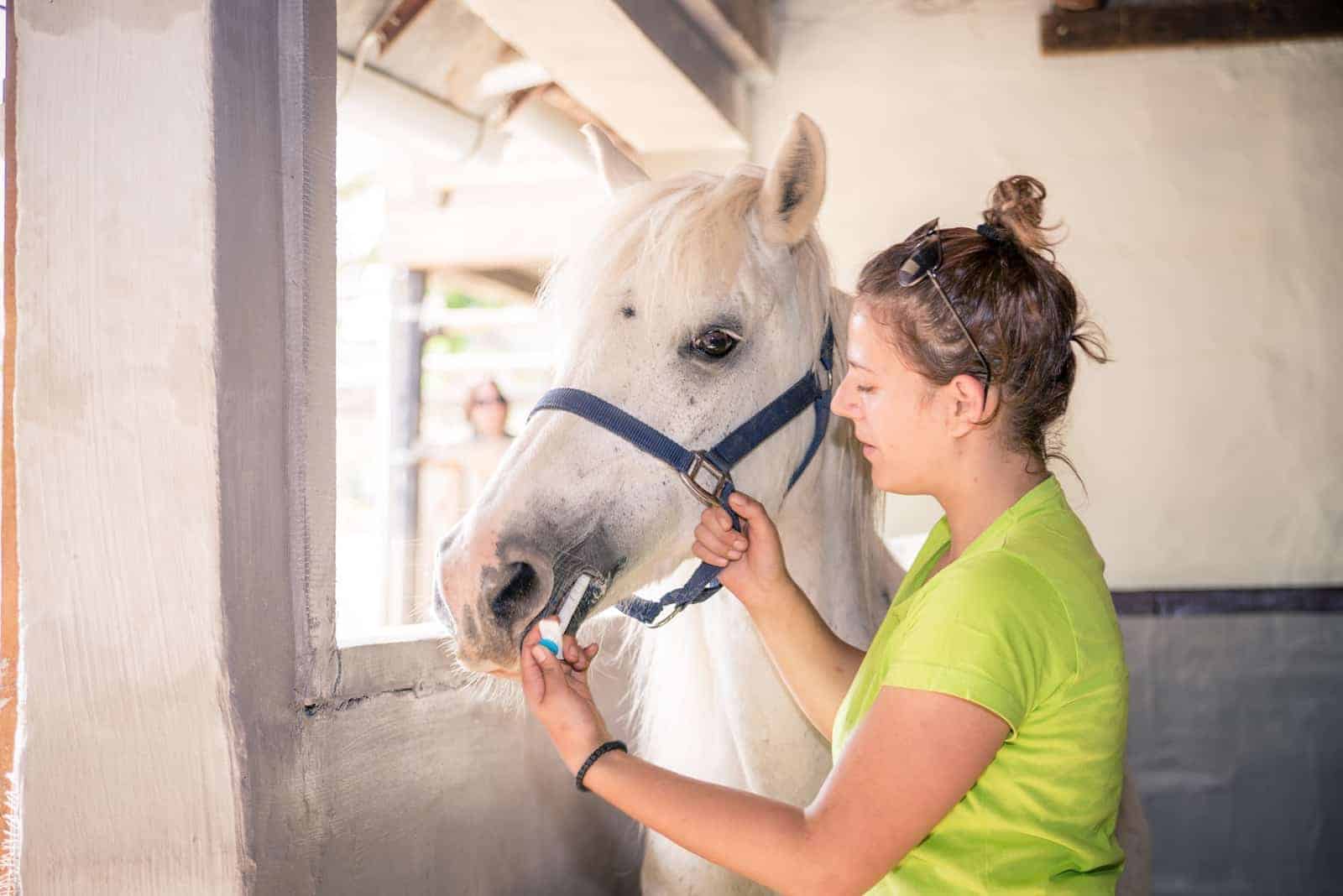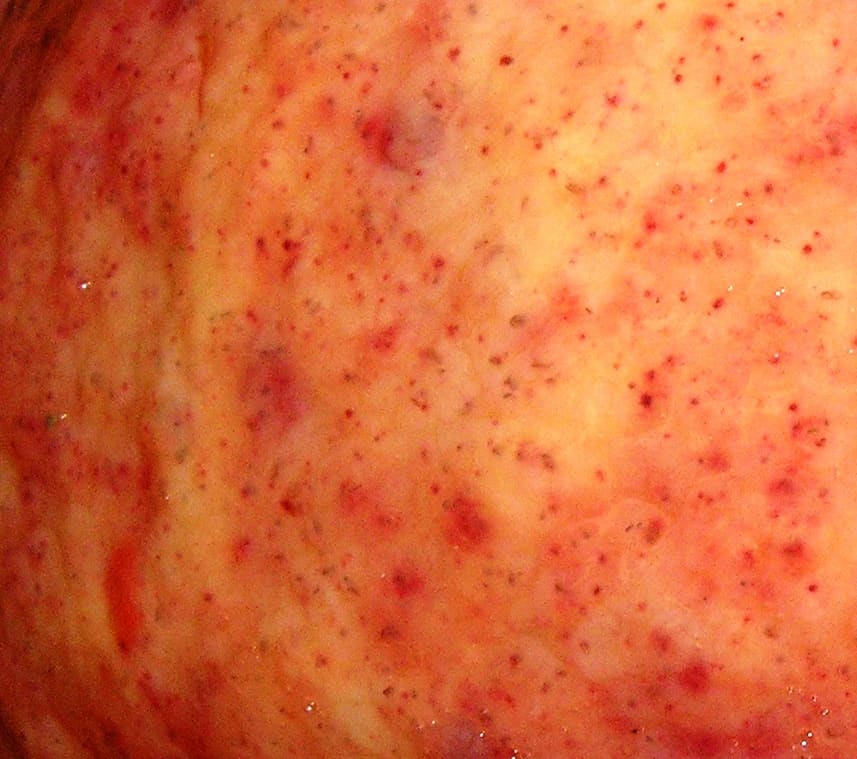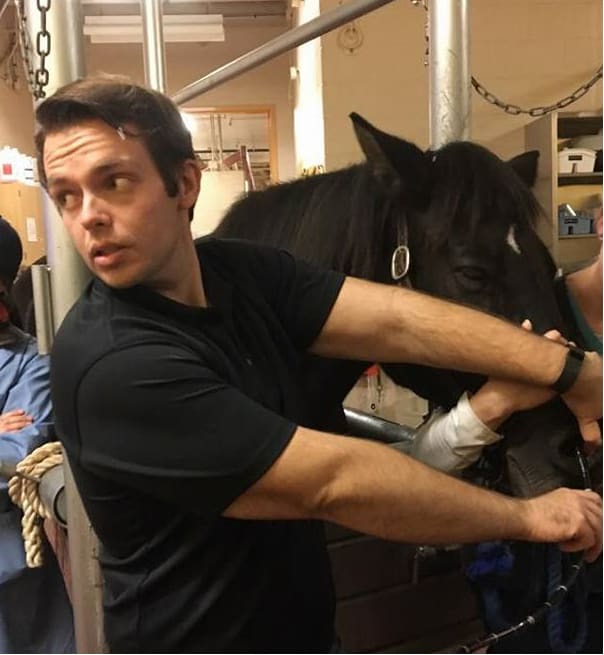Practical Equine Parasite Control

Smart strategies for targeting a variety of internal parasites in horses
What should I use to worm my horse, Doc?” It’s a question I get on a regular basis (and often in a thick New England accent, because I practice in Southern Maine). After a quick explanation that these medications are called dewormers and don’t “worm” anything, a discussion follows: What is the horse’s turnout? Does he travel? How many horses share his pasture? These details are pertinent to solving the riddle of when to deworm and with what.
In this article we’ll provide an overview of the common parasites your horse might face, the drugs best used to treat them, and the current state of anthelminthic (dewormer) resistance and deworming protocols.
Fecal Egg Counts
Gone are the days of rotating dewormer brands. A fecal egg count (FEC) is a simple, useful tool for evaluating a horse’s parasite load. It involves analyzing a horse’s fecal sample to gauge the number of parasite eggs per gram (epg) of manure. Veterinarians then use that number to move forward with treatment.
“It is a rough estimate of the parasite burden that your horse has inside of the gastrointestinal tract,” says Allison Williard, DVM, of Auburn Equine, in California.

Don’t expect your horse’s FEC to be 0, however. Veterinarians classify horses in one of three categories based on their FEC results: low (under 200 epg), medium (200-500 epg), and high shedders (above 500 epg). Guidelines suggest, regardless of the count, treating horses twice annually to rid the system of tapeworms and any other parasite not picked up on the FEC.
The FEC result is a snapshot in time. “Shedding will change based on season, age, and the stress level of the horse,” says Damita Hansen, DVM, of Cornwallis Veterinarians Ltd., in Nova Scotia, Canada. “As a horse ages, many factors and conditions may raise or lower its normal shedding level. This is why it is important to continue to monitor FECs at least yearly, even on horses who are previously low shedders.”
One step beyond an FEC is a fecal egg count reduction test (FECRT). “To me, an FECRT is as, or more, important as an FEC,” says Hansen.
An FECRT is the only way to definitively assess parasite resistance against a drug in a stable. This test involves obtaining a fecal sample and submitting it for analysis, administering a dewormer, and taking another fecal two weeks later. “An FEC is performed on both, and the difference between the two samples is calculated as a percent reduction,” says Hansen. “A low percent reduced indicates that not many worms were killed by the dewormer—therefore, the dewormer was ineffective, or the worms showed resistance. This is especially important for moderate or high shedders—you want to ensure your dewormer is effective and (the worms in) your individual horse (are) not developing a resistance problem.”
Anthelminthic Resistance
Anthelminthic resistance is quickly becoming one of the biggest issues facing equine medicine. What were once such effective dewormers are now no longer treating a horse’s parasitic burden. The old school of thought for treating large strongyles was to use a different dewormer type every two to three months—in other words, to rotate dewormers. While it was effective in eradicating large strongyles, it impacted other parasite species.
“The unexpected and unintended consequence of the frequent rotational deworming programs was the development of multidrug resistance in an emerging small-strongyle population,” says Ashleigh Olds-Sanchez, DVM, Dipl. AVBP-Equine, of Galisteo Basin Veterinary Services, in Santa Fe, New Mexico.

This deworming protocol left a small population of this other strongyle species alive. With constant exposure to dewormers, this population built up a resistance to the anthelminthic drug, “leaving a small percentage of highly resistant ones who then reproduced, creating even more resistant populations,” she explains.
Changing the thought process about equine parasites has been an uphill battle, say our sources . Instead of clearing a horse entirely of parasites, due to drug resistance the new goal is to focus on those horses that are shedding the most. Small burdens of strongyles typically are not harmful in horses so, instead of treating with a dewormer, veterinarians now recommend monitoring.
“We have to try to identify the horses who are highly susceptible to parasites and who are shedding the most eggs into their environment,” says Olds-Sanchez. “We target those horses more aggressively with properly dosed, properly timed, effective dewormers.”
Why should you, a horse owner, care about dewormer resistance? “If we continue to see increased resistance to the newer drug classes that used to be 100% effective, we may end up with no effective dewormers for our horses, and parasite disease and even death will potentially increase,” she says.
Nematode Life Cycle
Most of the parasites in this article are nematodes, and most nematodes have what is called a direct life cycle: The horse ingests eggs, and the parasite matures in the cecum and colon. After maturation, the adult releases eggs that are shed in the manure. Once in the environment, the larvae hatch and begin to molt. After the third molt, the larvae become infective. When the horse ingests them during grazing, the cycle begins again in another equine host.
Parasite Types
Small Strongyles
The most common of the parasites we’ll discuss here, your horse has likely carried some small strongyles (cyathostomins) in his lifetime. Adult horses, even with moderate loads, might show no signs of disease. Sometimes they lose weight and experience diarrhea. Rarely, small strongyles can cause a very serious problem in the horse called larval cyathostominosis.
This condition primarily affects horses under age 4. They often show signs such as sudden weight loss and overwhelming diarrhea, as well as colic, dehydration, and ventral edema (fluid swelling under the abdomen). These horses can look like they’re suffering from salmonellosis or Potomac horse fever, which the veterinarian should rule out.
The condition occurs after the strongyle larvae emerge from the intestinal walls, where they can remain dormant for months or, in areas with well-defined seasons, years. This means the horse stockpiles strongyles during grazing season, which can result in thousands of larvae emerging at once, inducing a huge inflammatory response in his gastrointestinal tract. Luckily, if treated quickly, these horses do well after a course of fenbendazole (from the benzimidazole deworming drug class) or moxidectin (a macrocyclic lactone). Vets are seeing small-strongyle resistance to other anthelminthic drugs, which are no longer useful for treatment.
Roundworms (ascarids)
Known as the ascarid, Parascarus equorum is primarily a parasite of foals. It’s very resistant to extreme weather and can withstand freezing temperatures and dry heat.
Because they cause disease in foals, ascarids are common on breeding farms. Affected youngsters can appear unthrifty, experience weight loss, and have a pot-bellied appearance. Furthermore, ascarid migrations through the thorax can cause respiratory disease.
A problem veterinarians face when they suspect a roundworm infection is how to treat it, because a “drench (large) dose” can result in a catastrophe. Yes, the parasites die off quickly, but they can die off so quickly that they cause a secondary intestinal impaction. Benzimidazoles carry less risk of a massive die-off and, therefore, veterinarians often recommend them for treating roundworm infections.
Tapeworms
These worms differ from many others because they are not nematodes. Officially known as Anoplocephala perfoliata, these parasites commonly cause weight loss and emaciation in horses. Tapeworm infections can also cause colic. These worms attach at the ileocecal junction, where the end of the small intestine meets the cecum and horses ferment their food. Severe infections can lead to cecal impactions. Recent study results suggest that almost all ileocecal intussusceptions (where one part of the gastrointestinal tract telescopes into another) are associated with tapeworm infections.
Fecal egg counts rarely detect tapeworm eggs. A blood test is available to screen for infections, but authors of the current American Association of Equine Practitioners recommendations suggest treating horses at least twice a year for A. perfoliata. Praziquantel (another macrocyclic lactone) anthelminthics are readily available to rid your horse of tapeworm infection but should be used sparingly due to early evidence of small strongyle resistance to this dewormer class.

Pinworms
Unlike many equine parasites, Oxyuris equi worms are not known to cause weight loss and unthrifty conditions. Instead, they settle at the very end of the intestinal tract, laying eggs around the rectum that cause intense itching. A rubbed-raw tailhead is often the hallmark of this infection. Thankfully, O. equi worms have not developed much anthelmintic resistance, and most dewormers should cure the infection.
Neck Threadworms
Onchocerca cervicalis worms make your horse’s neck their home. Adults embed themselves in the horse’s nuchal ligament, the fleshy attachment that runs from the withers to the poll. Adult threadworms often cause no issues, aside from some mineralization of the nuchal ligament. When the worms reproduce, however, problems arise.
After breeding, microfilaria (larvae) get released and migrate under the skin to settle in the bottommost aspect of the chest and abdomen, where flies are abundant. Their travels through the neck can cause infected horses intense itching. Dead microfilaria, especially, are horrendously itchy, often causing the horse to self-mutilate. Treatment with moxidectin or ivermectin (another macrocyclic lactone), however, usually clears the clinical signs.
Note that threadworm lesions can look like a few other conditions, including cancer, pythiosis (a skin infection caused by a funguslike microorganism), and proud flesh. Occasionally, your veterinarian will need to take a biopsy to make a definitive diagnosis of threadworm infection.
Large strongyles
The parasite of yesteryear, large strongyles wreaked havoc on the equine industry in the 1950s and ’60s.
“Years ago, large strongyles were a significant issue and a leading cause of colic and death in horses,” says Olds-Sanchez. Strongylus vulgaris was the main culprit. These parasites are active blood feeders, leaving affected horses weak, anemic, and emaciated. Their migration patterns through blood vessels can also result in thromboembolism, causing death in an unlucky few.
“The introduction of effective dewormers was great for equine health in that we had a prevention or treatment for large strongyles,” Olds-Sanchez adds.
Bots
As opposed to the parasites described throughout the rest of this article, bots are the larvae of the Gasterophilus, or botfly. These flies lay their eggs on the horse’s legs and chest. When horses go to scratch their limbs, as the eggs can cause mild itching, they trigger the bot larvae to hatch and embed themselves in the horse’s mouth. From there, the larvae travel to the stomach and go through their entire life cycle in the gastrointestinal tract, eventually passing in the manure, pupating, and then emerging as full flies.
Occasionally, veterinarians can see bots on the stomach walls during gastroscopic exams. Heavy infections can cause colic signs and irritation of the mouth and lips due to tissue burrowing. Treatment is relatively simple: Remove the bot eggs from affected horses’ limbs, chest, and neck, and deworm with ivermectin or moxidectin.
Lungworms
Dictyocaulus arnfieldi is the primary lungworm species that affects horses. As the name suggests, it can cause significant respiratory disease.
Donkeys carry D. arnfieldi naturally but are unaffected. The parasites can infect their equine pasturemates when larvae pass through donkey manure and get ingested by the horse. There, adults migrate to and mature in the lungs, causing increased respiratory rate, coughing, and respiratory distress. While you can treat the parasite with ivermectin, praziquantel, or mebendazole (a benzimidazole), lengthy infections can compromise the respiratory tract.
Dr. Allison Williard
Smart Strategies
What can you do in the face of a potential parasitic crisis? “An effective management strategy is usually threefold: strategic deworming, environmental cleanup, and good overall health,” says Williard.
Strategic deworming involves using the appropriate dewormer at the appropriate time, ideally after an FEC and/or FECRT. “Deworming in very cold or very hot months, when the parasites are dormant, is a waste of medication and not nearly as effective as deworming during the spring and fall, when you can target more active parasites,” Williard says.
Manure houses parasite eggs. By cleaning pastures and stables regularly, you can remove eggs from the environment, stopping the cycle and preventing exposure.
Underweight, ill, or weak horses won’t be able to combat a parasitic infection, no matter the treatment. “A good overall herd health program will help your horse’s innate immune system to do its job and help eliminate parasites,” says Williard.

Written by:
Chris White, DVM
Related Articles
Stay on top of the most recent Horse Health news with















